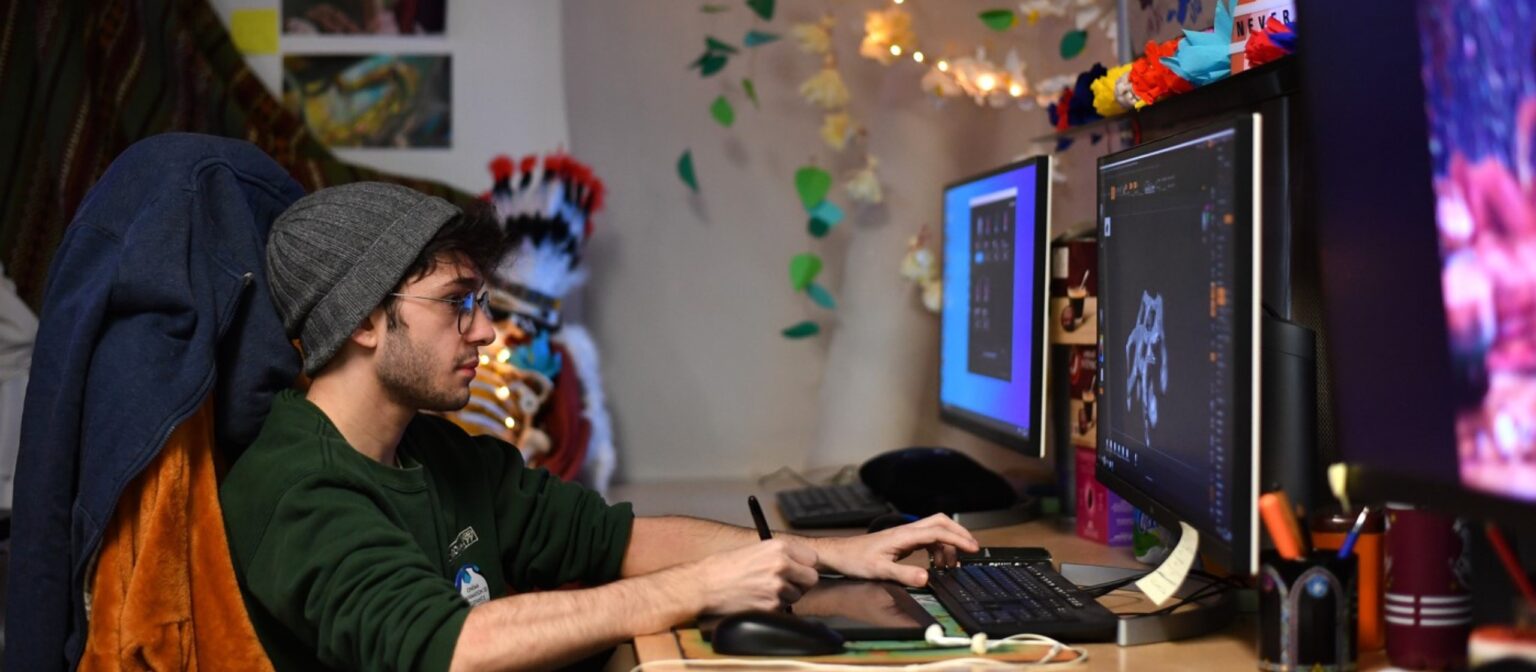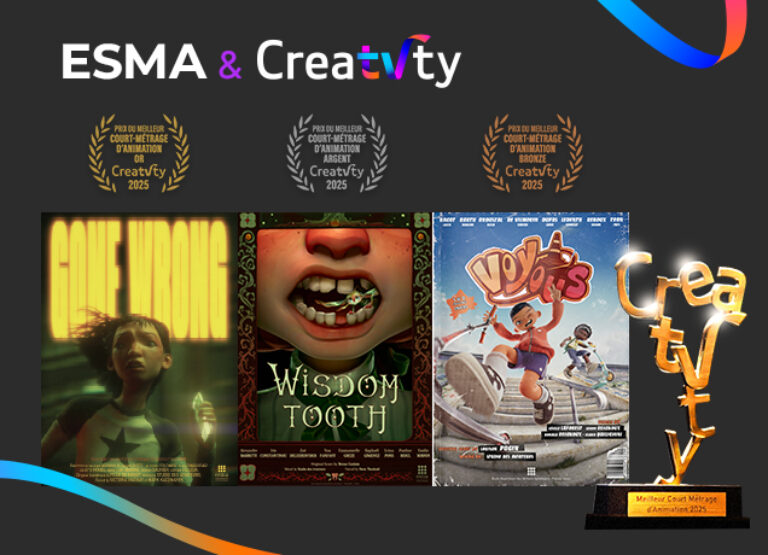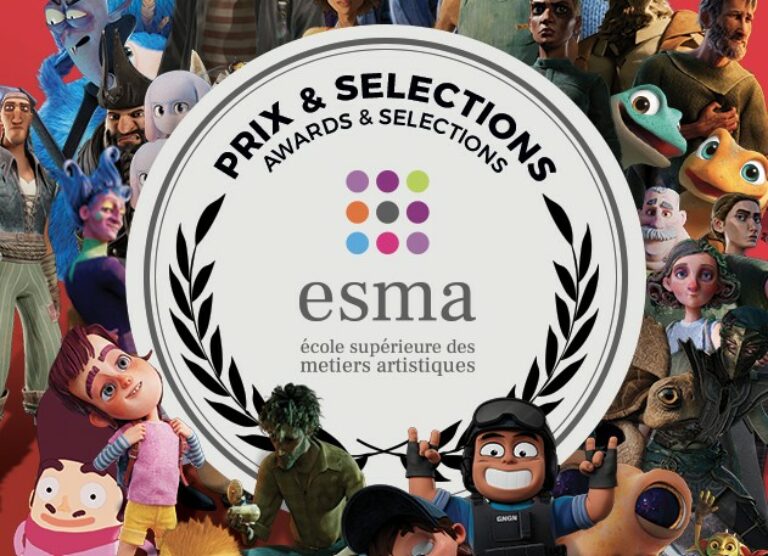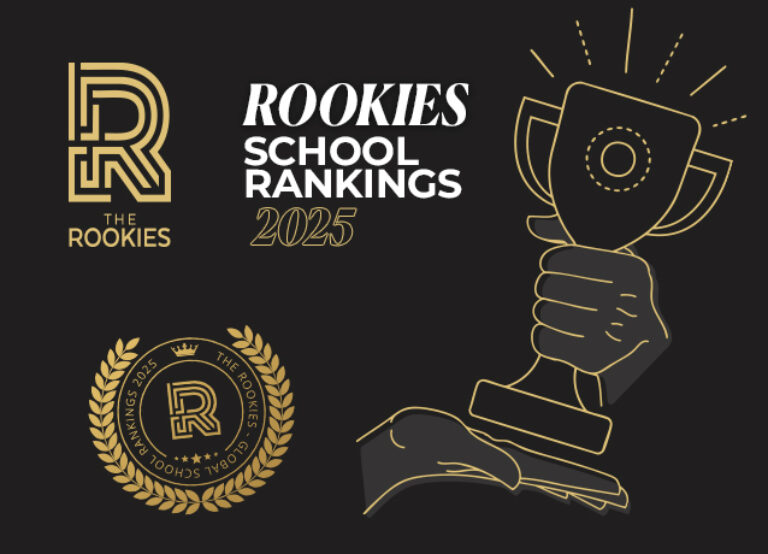
- Published 03.10.2025
- type Thematic news items
- Training Video Game
Are you naturally drawn to creative worlds and new technologies? E-Sport, which combines these two aspects in an explosive cocktail of competition and spectacle, is much more than a simple fashion phenomenon: it's a real cultural revolution that is transforming our relationship with video games.
What is e-Sport?
Imagine a virtual arena where thousands of spectators hold their breath as teams compete in epic battles.
E-Sport, a contraction of “electronic sport”, is exactly that: the competitive practice of video games raised to the level of professional sport. But contrary to popular belief, it’s not just about “playing video games”.
To understand e-Sport, imagine a game of chess played in a very short space of time, combined with the intensity of a football match and the precision of a marksman.
Professional players train between 35 and 50 hours a week, analysing their performance, studying their opponents and developing strategies. The leading e-Sport games fall into several categories, each requiring specific skills:
MOBAs (Multiplayer Online Battle Arena) like League of Legends dominate the scene. These games pit two teams of five players against each other in a strategic battle where every decision can turn the tide of the match. For art school students like those at ESMA, these games are particularly interesting for their distinctive art direction and creative character designs.
FPS (First-Person Shooter) games like Counter-Strike offer a more direct experience, where precision and reflexes are king. The scenography of the maps and the design of the weapons provide a fascinating field of study for future artists.
Sports games such as FIFA virtually reproduce the intensity of real-life matches, while ‘Battle Royale’ games such as Fortnite and PUBG create spectacular survival arenas where 100 players fight to the last man.
The importance of technical and strategic mastery
Beyond pure training, mastery of the game mechanics is essential. Each game has its own subtleties, shortcuts and advanced techniques that enable players to gain an advantage over their opponents.
Maps, strategies and game updates need to be studied in minute detail to anticipate your opponent’s moves and exploit the loopholes in the system. Optimising the game’s parameters is also crucial to automating certain moves and increasing efficiency.
Taking part in competitions, tournaments and championships is an essential step in competing against other players, gaining experience and getting noticed by professional teams. Joining a team is a major asset for players aspiring to professionalism, as it allows them to benefit from the experience of other players, raise their profile and gain access to structured coaching.
The challenges of amateur e-sport
While the life of a professional gamer may seem seductive, it is important to highlight the challenges faced by amateurs. The lack of suitable infrastructure and structured training systems is a major obstacle for budding young players. Unlike traditional sports, amateur e-sport suffers from a lack of clubs, training centres and qualified coaches, limiting opportunities for progression.
Financial and social obstacles
Amateur players also face major financial challenges. The lack of subsidies and the high cost of high-performance computer hardware make e-sport difficult to afford for some.
NB: don’t neglect equipment such as desks and ergonomic chairs if you want to continue training in good conditions.
Reconciling e-sport with studies or work is another major challenge, as most enthusiasts have to juggle their passion for e-sport with their day-to-day obligations. The social recognition of amateur e-sport is still very limited, perceived by many as a mere hobby, which can lead to a significant lack of support from the people around them. The mental aspect plays a big part in an athlete’s performance.
Follow your first tournaments
The world of e-Sport tournaments is as rich as it is varied, offering a permanent spectacle for enthusiasts.
To follow these competitions, go to Twitch or YouTube Gaming, Discord, Trovo, Steam TV, MS Mixer..
These platforms offer not only live broadcasts, but also in-depth analyses and exclusive content. As an art student, pay particular attention to the artistic direction of the broadcasts, the transitions, the animations and the visual identity of the teams.
Tournaments: the height of competition
Major e-sport tournaments represent the pinnacle of the competitive pyramid, attracting millions of spectators and offering substantial prizes. These tournaments are widespread, but they also take place on different scales. ESMA, for example, organises its own 100% free e-sport tournament on the Toulouse campus, based on the games Super Smash Bros and Rpcket League.
A few figures:
- The League of Legends World Championship is the e-Sport equivalent of the Football World Cup. In 2022, over 5 million spectators watched the final simultaneously. The staging of the event, with its opening ceremonies, concerts and innovative visual effects, is particularly interesting.
- Dota 2’s The International is renowned for its impressive prize pools, which have reached $34 million in 2019. It’s a perfect example of how e-Sports can generate an economic ecosystem.
The obstacle course to becoming a professional gamer
The road to becoming a professional e-sports player is full of pitfalls, requiring commitment and discipline. The first step is to choose your favourite game from the multitude of titles available, such as League of Legends, Fortnite or Counter-Strike.
Specialisation is key, because each game has its own mechanics, strategies and communities.
Once the game has been chosen, intensive training becomes the watchword. Professional players spend between 35 and 50 hours a week honing their skills, committing themselves to a daily routine.
This regular, structured practice aims to improve reflexes, hand-eye coordination and strategic understanding of the game. Professional players analyse their performances, watching replays of their games to identify mistakes and refine their strategies.
E-sport as a way of life
The professional e-sport player is also an athlete, subject to physical and mental pressures. Managing stress and pressure is vital to maintaining an optimum level of performance.
Intensive e-sporting can lead to health problems associated with a sedentary lifestyle, such as back pain, eye strain and the risk of addiction. It is therefore crucial to adopt a healthy diet, maintain good physical condition and strike a balance between gaming and personal life.
Developing a professional image is also important for e-sport players. Communicating well on social networks, broadcasting training sessions and building fan loyalty are all key elements in raising your profile and attracting the attention of sponsors.
How e-Sport is influencing gaming culture
The impact of e-Sport on gaming culture is significant, redefining codes and creating new standards.
A revolution in game design
Developers are now systematically incorporating competitive elements into their e-Sports games. User interfaces (UI) are optimised for competition, ranking systems are increasingly sophisticated, and particular attention is paid to the balancing of games. (UX)
For designers, this means new creative challenges: how do you design an interface that is both aesthetically pleasing and functional? How do you create visually distinctive characters, vehicles, creatures and so on, while maintaining perfect legibility in game situations?
The emergence of new creative professions
Motion designers create animations for broadcasts, graphic designers create visual identities for teams, and set designers imagine the backdrops for physical events. For students studying video games, these new career opportunities are particularly interesting.
An influence on player engagement
Professional streams become lectures, forums are full of tactical analysis, and social networks vibrate to the rhythm of competitions. This culture of sharing and constant learning creates an ongoing demand for quality visual content: animated tutorials, infographics, analysis videos, etc.
The legitimisation of video games
Perhaps the most profound change: e-Sport has helped to legitimise video games as a form of cultural expression. Professional gamers are now regarded as athletes, with coaches, mental trainers and rigorous training programmes. This professionalisation is accompanied by a growing focus on the visual and artistic aspects of games and events.
Conclusion
E-Sport is much more than just entertainment. It’s a laboratory for visual innovation, a field for narrative experimentation and a rapidly expanding professional sector. Whether you’re passionate about video games or simply curious about new forms of artistic expression, e-Sport deserves your attention.
Art skills (sense of composition, colours, values, technical skills, understanding of design principles, etc.) are invaluable in this constantly evolving ecosystem.
E-Sport needs creative people who can enhance the spectacle, tell compelling visual stories and imagine the experiences of tomorrow.
So, whether you want to become the next great game interface designer, create stunning visuals for major tournaments or simply understand this new form of entertainment, e-Sport opens its doors easily and for free.
It’s up to you!





